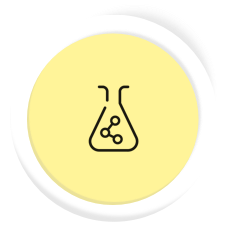Business Area Catalysis
»The Business Area Catalysis offers innovative catalyst solutions that help reduce energy consumption and greenhouse gas emission, despite growing chemical production.«
»The Business Area Catalysis offers innovative catalyst solutions that help reduce energy consumption and greenhouse gas emission, despite growing chemical production.«

Energy and greenhouse gas reduction

Ammonia for crop fertilizers

Energy processing

Fine and specialty chemicals

Efficiency of industrial process
In the manufacture of chemical products, the use of catalysts is indispensable for the efficient use of raw materials and energy, and necessary for optimized chemical reaction processes. As a market and technology leader, the Business Area Catalysis delivers solutions that add value for customers in the petrochemical, chemical, fuel and plastics industry.
For the 2015 reporting year, the Business Area Catalysis showed solid growth in local currencies of 4% and EBITDA margin before exceptional items of 25.1%, the best profitability of all Business Areas again despite challenging conditions, such as the market situation in China. In the medium term, Catalysis targets an annual organic growth of 6% to 7%. This will be achieved by a solid position in gaining new large-scale projects with technology licensing partners, growth in new applications through strong innovation power and the further strengthing of the activities in China.
In addition to generating significant growth potential, the strategic focus of this business area was to optimize the allocation of existing resources on core business with strong market position and differentiation potential. To this end, Clariant divested the loss-generating energy storage business that was previously part of this Business Area in 2015. The target margin for Catalysis is to remain at the high level reached in 2014 and 2015.
in CHF m
in CHF m (before exceptional items)
before exceptional items
per year
before exceptional items
The United Nations estimated that the world population will grow from 7.2 billion people in 2014 by 15% to 8.1 billion in 2025. Over the same period of time, the global arable land is expected to expand by only 4% – less than one third of the population increase. The great challenge of the future therefore is to close the gap by using the arable land more efficiently. Additionally, manufacture of fertilizers requires a lot of energy and generates substantial CO2 emissions. Clariant has introduced a highly active catalyst, the innovative AmoMax®-10 catalyst, with substantially higher efficiency. As a result, significantly less energy is needed to produce ammonia as a fertilizer in food production.

were avoided so far by shifting the currently 100 ammonia production facilities to AmoMax®-10
 Taylor Archer
Global Director of Sales and Product Management –
Taylor Archer
Global Director of Sales and Product Management –»In the production of crop fertilizers you need a catalyst like AmoMax®-10 which is substantially more efficient and environmentally compatible.«
With a catalyst, reactions occur faster and require less activation energy. Because catalysts are not consumed in the catalyzed reaction, they can continue to catalyze the reaction of further quantities of reactant. For example, by using Clariant’s innovative and highly active AmoMax®-10 catalyst, significantly less energy is needed to produce ammonia.
AmoMax®-10 catalysts are already very successfully used in the production of crop fertilizers, as approximately 80% of ammonia is used to manufacture fertilizers. At the end of August, Clariant won the 100th global reference client strengthening our leading position in the ammonia catalysts industry.
AmoMax®-10 stands out from other catalysts because it consists mainly of iron oxide containing mineral wustite and other specific promoters which improve its effectiveness. As a result, its activity is 20% higher compared to catalysts based on magnetite which had been common before. The 100 ammonia production facilities that have switched to AmoMax®-10 so far have been saving around 1 000 gigawatt hours annually, which equals the energy consumption of a city with roughly 80 000 households and a saving of approximately 500 000 tons of CO2 equivalents.
Highly effective catalyst to produce fertilizers more efficiently
Would you like to learn more about this product innovation? REFORMAX® & AMOMAX® – PRODUCE FERTILIZERS MORE EFFICIENTLYClariant has introduced a highly active catalyst, the innovative AmoMax®-10 catalyst, with substantially higher efficiency. As a result, significantly less energy is needed to produce ammonia as a fertilizer in food production.
Higher production efficiency
Higher production efficiency
Reduced need of investments
Reduced need of investments
Substantial energy savings
Significant cost savings
The manufacture of 18 products (among thousands) from the chemical industry accounts for 80% of energy demand in the chemical industry and 75% of greenhouse gas (GHG) emissions. Catalysts and related process improvements could reduce energy intensity1 for these products by 20% to 40% as a whole by 2050 combining all scenarios. In absolute terms, such improvements could save as much as 13 exajoules (EJ) and 1 gigatonne (Gt) of carbon dioxide equivalent (CO2-eq) per year by 2050 versus a »business-as-usual« scenario.2
1 Energy used per unit of product produced
2 An exajoule is 1018 joules. In 2010, the United States used 93 EJ of primary energy and Germany 13.7 EJ
Clariant’s ENVICAT® catalysts help to prevent environmentally harmful nitrogen monoxide in a particularly efficient manner. Nitrogen monoxide is jointly responsible for the so-called greenhouse effect and also causes massive damage to the Earth’s ozone layer. As an example, ENVICAT® is used in the manufacture of nitric acid, whereby 90% of greenhouse gas emissions can be avoided.
Clariant newly introduced its pre-sulfided ShiftMax® 820S Sour Gas Shift (SGS) catalyst with the successful start of a commercial methanol production facility of Shanghai Huayi Energy Chemical Co. Ltd. This is of particular significance as it is the first industrial application of this catalyst in China.
ShiftMax® 820S increases operational efficiency while reducing risks, costs and complexities for the chemical industry worldwide. The new SGS process for example reduces capital expenditure for the shift system by up to 20% and optimizes operating costs with up to 30% lower catalyst volume.
»Our innovative catalyst ShiftMax® 820S adds significant value for Chinese coal-to-chemical customers.«